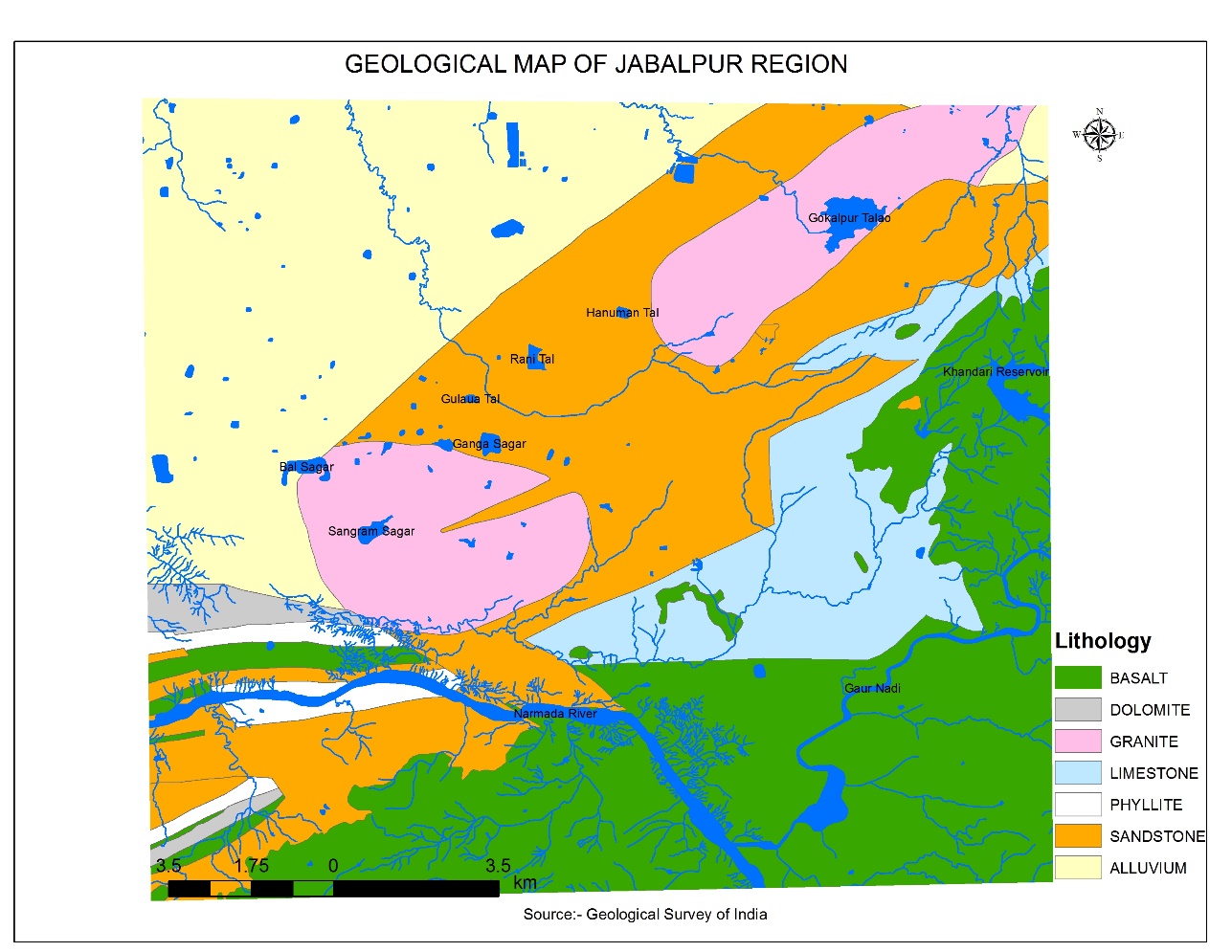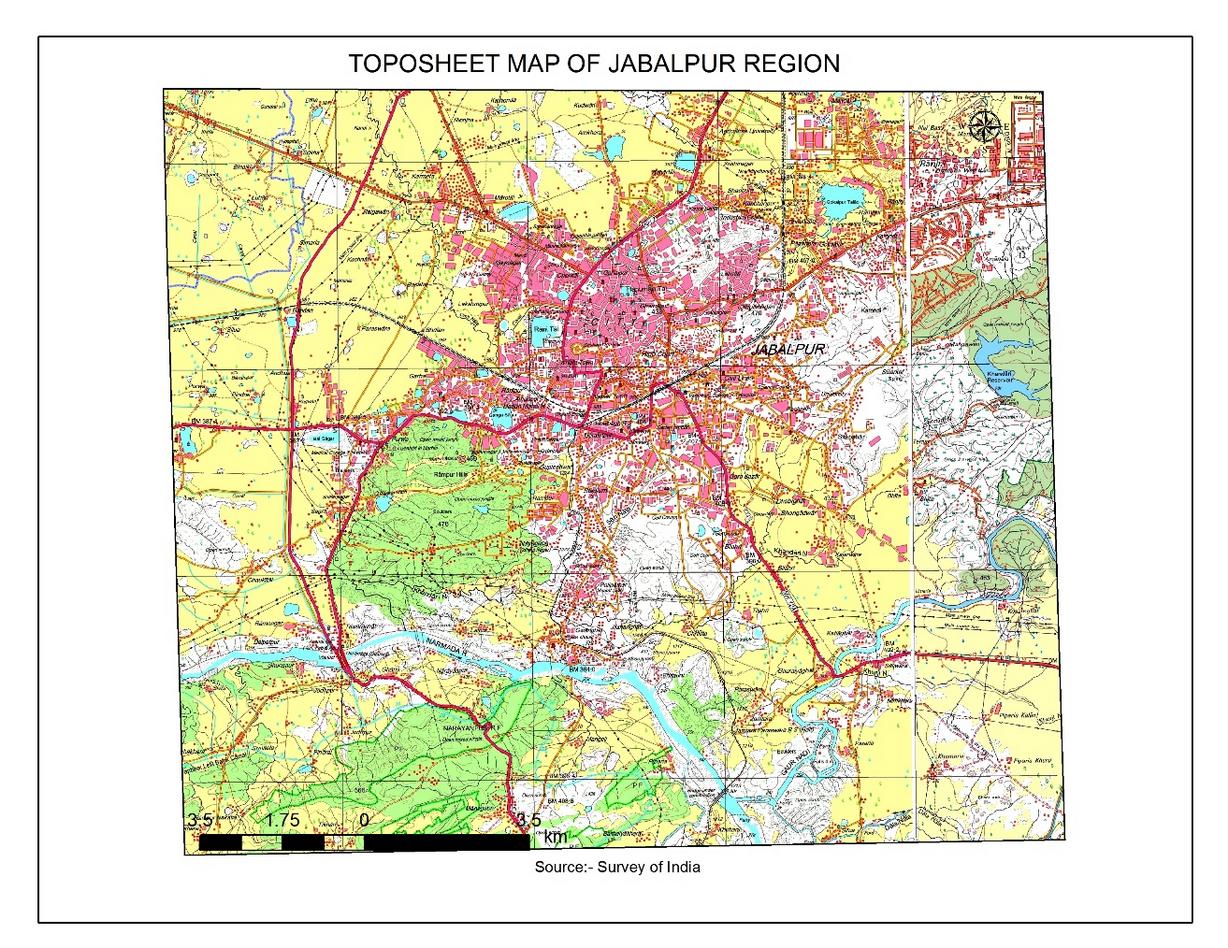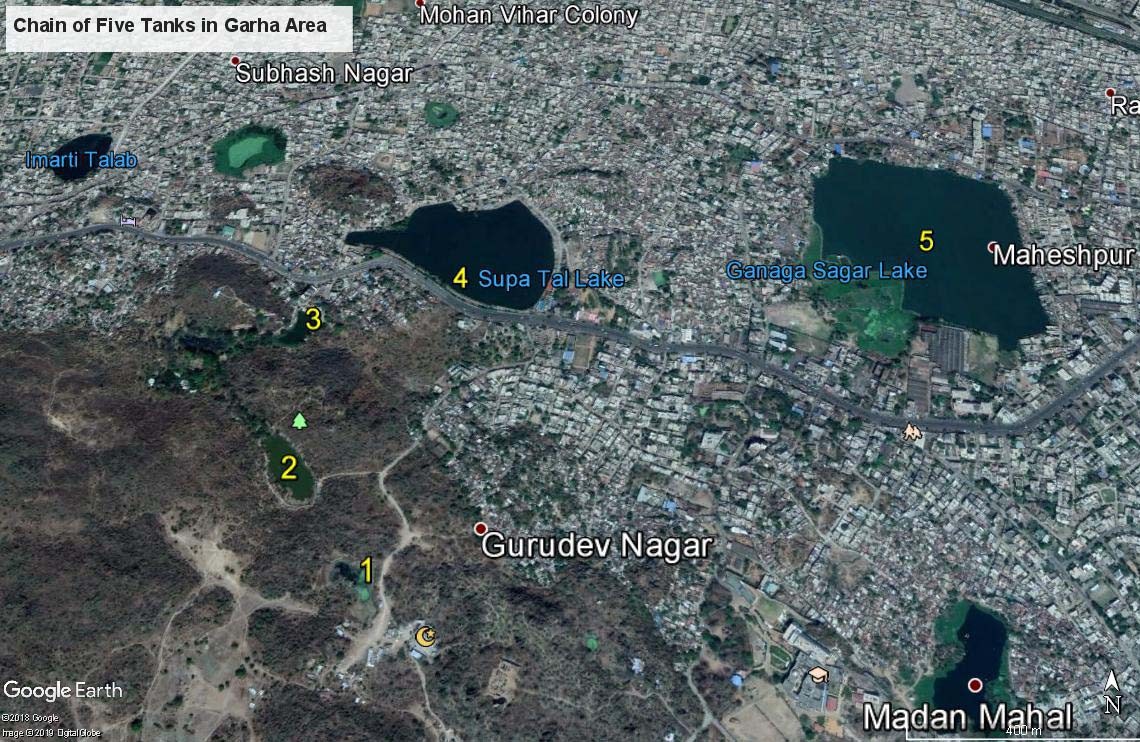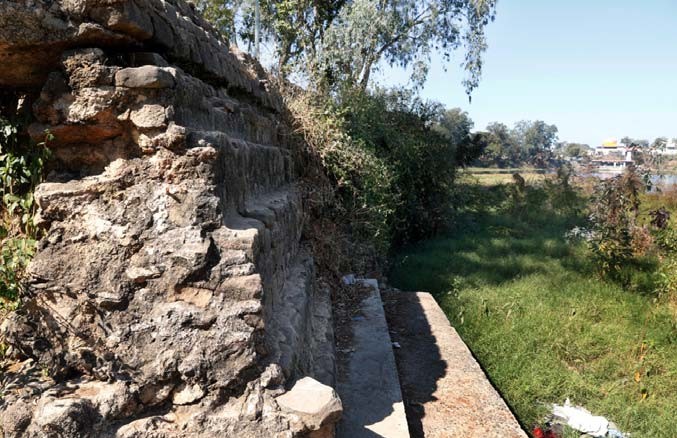The Gonds, ruled Central India for nearly 350 years since the mid-fourteenth century,. The principal states of the Gonds were Garha-Mandla, Devgarh, Kherla and Chanda. The Garha-Mandla dynasty is best known in history. Sangram Shah was the greatest and the most glorious ruler and the borders of his kingdom stretched in east from Lafagarh of Bilaspur to Makdai in Harda (MP) in west and from the southern region of Panna to Bhandara (Maharashtra) in south.
Garha, the then capital city of Gonds is situated in Jabalpur. The climate of this region is mainly semi-arid. The rainy season begins in the third week of June and approximately ninety percent of the rainfall occurs from June to September. The remaining ten percent precipitations get unevenly distributed till May. It can be assumed that during the Gond period, the gross quantity of rainfall could be slightly more than the present-day average. Narmada is the principal river of the region.
Water management during the Gond period
The main water bodies of the Gond period were located in the Omti Nala and Khandari Nala basin and were constructed mostly on alluvial soil, weathered granite and sandstone.

The Gonds constructed moderate sized tanks, small ponds, chain of tanks and step-wells. Rulers such as Sangramshah, Hirdeshah, Durgawati, Dalpatshah, Veernarayan, Chhatrashah, Narendrashah and Nijamshah, took maximum interest in tank construction.
The tanks were saucer-shaped with a size of around more than four hectares. Few tanks were constructed on high plateau and were located away from habitations. It seems that they were constructed to provide drinking water to wild animals. It is quite possible that some of these water bodies were built by nomads and prosperous individuals.
In Jabalpur, the Gonds constructed fifty-two tanks, one hundred and sixty-one small tanks (talliya) and several step-wells on the commercial routes. Most of the water bodies were built in the Omti Nala basin. Few water bodies were also constructed in the Khandari Nala basin. Of these:
- Thirty five tanks were located on the northern slope of the Madanmahal Hill, Pisanhari ki Madhiya and the Bargi Hills. These water bodies were constructed in and around settlements to ensure all time availability of water.
- Four tanks were built on the southern slope of the Madanmahal Hill, Pisanhari ki Madhiya and the Bargi Hills. Here the population density was least.
- Ten tanks were built on the northern and north-western slope of the Lalmati, Karia Pathar and Madar Tekri (Hill). These tanks have been constructed near old settlements of Jabalpur
List of tanks whose catchments are on the northern slopes of the Madanmahal Hill, Pisanhari ki Madhiya and Bargi Hills
List of tanks whose catchments are on the southern slope of the Madan Mahal Hill, Pisanhari ki Madhiya and Bargi Hills
List of tanks whose catchments are on the Lalmati, Karia Pathar and Madar Tekri
Survey of India Toposheet of Jabalpur region gives names of major tanks of Jabalpur region. The toposheet also shows the concentration of water bodies in Garha area and reveals that there has been areduction in the size and number of water bodies.

The tanks of the Gond period were without canals. Owing to the absence of canals, it is inferred that they must have been built to meet the drinking and household needs of the people.
Four big tanks were also constructed during the Gond period that even exist today namely Budhasagar in Budhagar, Sarman Sagar in Majhgawa, Kounrai in Kuagram and Kundam Sagar (now Kundeshwar) in Kundam. The tanks were small and their depth was sufficient enough so as to cope with the annual evaporation losses and usage. The perennial percolation tanks regulated floods in the rainy season and supported non-monsoon flows of small rivers.
Several step-wells are also found in the Jabalpur area. Some of them are still perennial and in good condition. Local material was used in their construction and steps were provided to the wells for easy access to water. Besides rulers and kings, prosperous people also constructed them. Some important step-wells of Jabalpur of the Gond period have been enumerated below:
The depth of step-wells varied from nearly fifty feet to one hundred feet. This depth ensured water availability in all seasons and circumstances. The upper soil portion in the step-wells was lined with local stones, whereas the non-collapsible portion of aquifer was left unlined to allow free flow of water.
Decentralised water conservation through tanks
A decentralised system of water conservation was adopted by the Gonds. Their emphasis was on constructing an adequate number of small, but deep tanks to ensure water availability in the entire region and deposition of silt in a decentralised manner. This arrangement provided long life to the tanks, kept the groundwater level at a shallow depth and provided enabling conditions for better retention of soil moisture.
Thus tanks, even in small catchments, if constructed wisely, could ensure water adequacy. By maintaining continuous flow of water in the tanks, water quality of the tanks was maintained and biodiversity supported. The tanks constructed by Gonds included:
- Storage Tanks that were constructed mainly on alluvial soil and impervious rocks found in the western, northern and eastern plains of the Garha region. Very little water seeps underground from the tanks and by keeping sufficient depth, they were made perennial and remained functional throughout the year.
- Recharge Tanks were mostly located on weathered granite and other rocks of similar hydrological properties. During the rainy season, these tanks, first saturated the thirsty aquifer layer and then gradually filled the tank. Since the storage capacity of the aquifer was very large, these tanks took time to fill but once they are filled and ground water is replenished, they become a large and reliable source of ground water. As water demand was less in the Gond period, they remained perennial. Their effect is still visible in the Garha area.They mainly aided in groundwater recharge.
- Chain of Tanks: Gonds had built a chain of five tanks on the same drainage (small river) in the Garha region of Jabalpur. The chain consists of Maharaj Tal, Kolatal, Devtal, Supatal and Ganga Sagar and are located in a descending order. Maharaj Tal is at the top of a granite hill, while Ganga Sagar is in the plain (away from the bottom of the hill) and is located on sandstone.

In the rainy season, Maharaj Tal gets water from the surrounding hills. Once it is full, its overflow fills the Kolatal. In this way, overflow from upstream tanks and runoff from the corresponding catchments, fill Deotal, Supatal and Ganga Sagar. The excess water from Ganga Sagar meets Omti Nala. The waters of Omti Nala meets Pariyat and finally Narmada via the river Hiran. Interestingly, all the five tanks still exist and contain sufficient water.
Tanks constructed by Gonds, invariably had earthen embankments and a waste-weir. Stone pitchings were provided on both sides of the embankment. The embankment was thick, safe and strong. The ratio between the height of the embankment and its bottom width and location of waste-weir was technically sound and safe. It is worth mentioning that in the past five hundred years, there has been no incident of tank failure.
A review of literature on water bodies built in Parmar (Raja Bhoj—1011 to 1055) period, Chandela (tenth century to thirteenth century) period, Bundela (fifteenth century to eighteenth century) period and Gond (1300 to 1789) period shows that during the Parmar period, a huge reservoir (W. Kincaid, 1888, area roughly 650 square kilometers) was constructed on the Betwa River at Bhojpur (Bhopal).
In the same period, a comparatively small reservoir (area roughly 6.50 square kilometers) was built on the Kolansh River at Bhopal. After these two large reservoirs, no reservoir of such an enormous size was built in Malwa, Bundelkhand or Jabalpur region.
There were several variations in the sizes of tanks after the Parmar period. Chandelas built small tanks. In Bundela period, increase in size was observed. Chandela tanks adopted superior technology. During the Gond period, once again, the size of tanks decreased.
Cementing material was not used by Parmars in tank construction. They used very heavy stones. These stones, with plain surfaces, were arranged one over the other. This arrangement avoided entry of rain water (weathering agent) in the structure. In the Chandela, Bundela and Gond period, lime mortar was used as cementing material.
The waste weir of Sangram Sagar below shows that lime mortar was used as cementing material to fix stone blocks on the embankment.

Water bodies of Gond period had an intimate link with water-bearing properties of the geological formation. The adopted techniques were environmentally-friendly.
Table given below links forty-eight tanks with underlying geological formation. Out of 48 tanks, 23 tanks (48 percent) tanks were built on alluvium soil. 12 (25 percent) tanks on weathered granite, 12 tanks (25 percent) on Gondwana sandstone and one tank (two per cent) was built on Lameta (mix of Limestone with subordinate sand and clay) formation.
A critical review of tanks, constructed by Gonds reveal that:
- Adopted engineering was sound.
- Waste weir designing was perfect and was capable of managing surplus run-off therefore no example/evidence available of breaches of these tanks.
- Width of embankment (Bund) is adequate to bear the water thrust.
- Silt deposition is minimum. This is a unique management between silt inflow, retention and release from the tank.
- Local weather and the water-bearing properties of the geological formations was precisely known and the same was used in tank construction.
- Capable and experienced masons/architects were available.
- Matchless combination of purpose, facilities and intention existed. On this basis, Gonds decided storage and number of water bodies.
- Need-based construction ensured universal availability of water in the region.
The current silt deposition, change in water quality and poor biodiversity is a recent phenomenon, observed in these tanks. This is mainly the result of land use change, neglect and increasing pollution.
The tanks of the Gond period are excellent examples of the water wisdom of our ancestors. It is relevant even today and needs to be highlighted and practised.
This is Part II of the article on the Gonds of Garha Mandla, please view Part I of this article here
K. G, Vyas is a geologist and well known writer on environmental issues. He has served as a consultant for the Rajiv Gandhi Drinking Water Mission in Madhya Pradesh.














